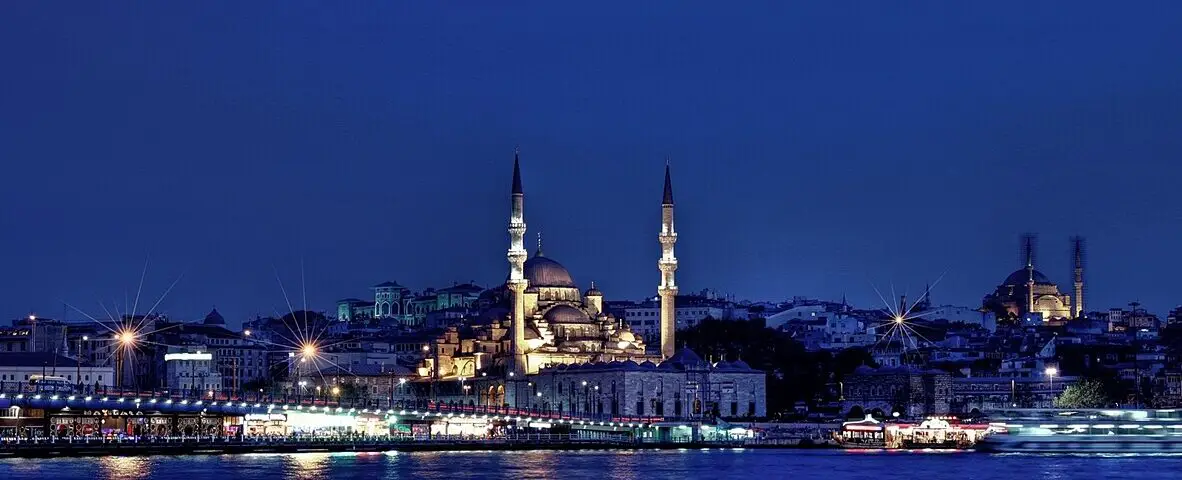Istanbul the city of two continents has a rich history, and is uniquely positioned as it spans two continents: Europe and Asia. The largest city in Turkey and the fifth-largest city by population (16 million) globally, Istanbul has gained recognition for its strategic location and cultural blend.
One part of Istanbul resides on the European side, while the other extends into the Asian region. They are united by the illustrious and uniquely important, Bosphorus Strait.
Istanbul, the city of two continents, is an important cultural, economic, and historical hub. Its beauty and charm attract visitors from all corners of the globe. The geographical intersection has fostered an intriguing fusion of Eastern and Western influences. And it is manifested in diverse architecture, cuisine, and traditions.
Visitors can explore historical places in Istanbul. With stunning landmarks, you can immerse yourself in the city’s rich history and vibrant atmosphere. From ancient palaces and stunning mosques to bustling markets and lively neighbourhoods, there is always something to discover. Efficient public transportation, including trams, metros, buses, and ferries, make getting around Istanbul effortless. You can experience all the diversity the historical city has to offer.
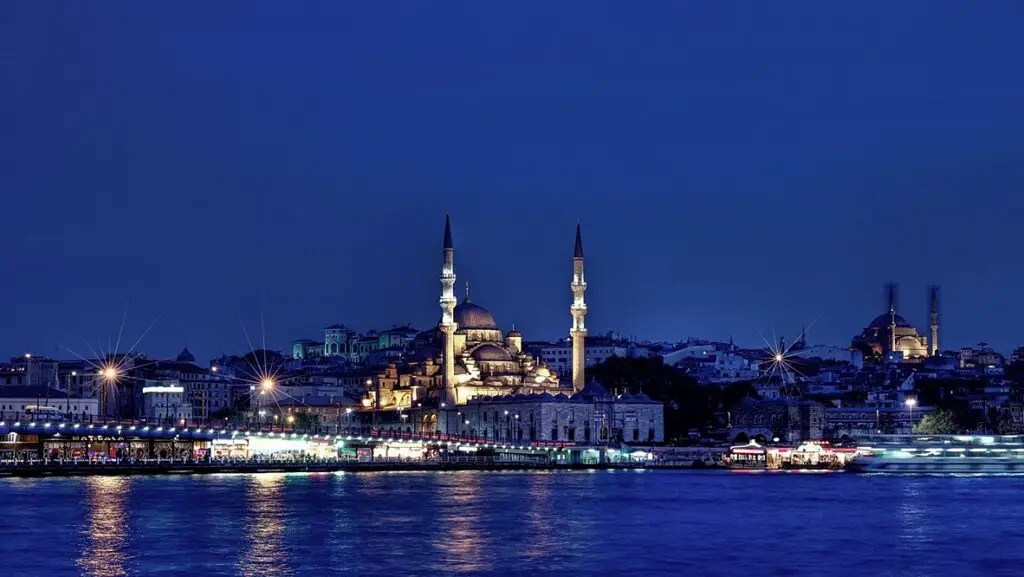
Key Takeaway
The City’s unique characteristics, positioned between two continents, offer visitors an unforgettable experience unlike anywhere else in the world.
History of Istanbul the City of Two Continents
The historical city of Istanbul provides a diverse and rich history spanning three millennia. Its story began as a small settlement in the Neolithic period around 6700 BC. The area, known as Byzantium in ancient times, evolved over centuries, playing a crucial role in the development of many empires.
The Heart of the Byzantine Empire
Founded by the Greeks in the 7th century BC, Byzantium became a significant centre under Roman rule. Emperor Constantine the Great recognised its strategic position and proclaimed it the new capital of the Roman Empire in 330AD, renaming it Constantinople. As the empire shifted eastward, Constantinople slowly emerged as the heart of the Byzantine Empire.
The Byzantine Empire prospered for nearly a thousand years, with Constantinople flourishing as a hub of culture, commerce, and religion. The city’s impressive monuments are testaments to its former grandeur. However, political instability and invasions weakened the empire, leaving it vulnerable to external threats.
The Fall and Rise of Constantinople
In 1204, during the Fourth Crusade, Constantinople fell to the crusaders, and the Latin Empire was established. The short-lived empire ended in 1261 when the Byzantines reclaimed their capital. However, the restored Byzantine Empire struggled to regain its former glory. And in 1453, the city fell to the Ottoman Empire, led by Sultan Mehmed II.
The Ottomans embarked on an ambitious campaign to expand their empire, and Constantinople became their new capital. The city experienced a period of rapid growth and magnificent architectural projects. Istanbul remained the Ottoman Empire’s centre until it collapsed following World War I.
Throughout its long and diverse history, Istanbul has been a meeting point of cultures and a bridge between Europe and Asia. The many empires that have called it home have left a significant impact on the city’s culture, architecture, and historical legacy, making it a vibrant and captivating destination for visitors.
Istanbul’s Historical Landmarks
Historical sites of Istanbul provide a multitude of awe-inspiring landmarks. The sites we feature provide an insight into the city’s rich past and its unique blend of cultures.
Hagia Sophia
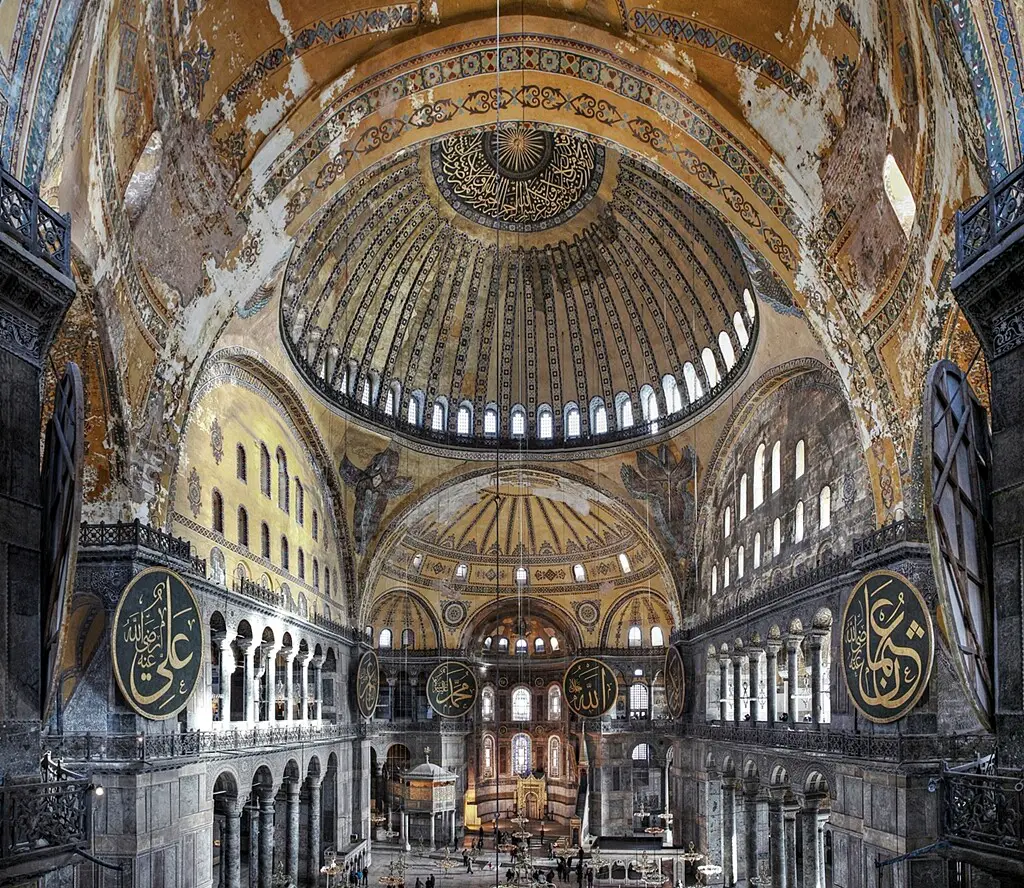
One of the most historical sites of Istanbul is the Hagia Sophia. Originally built as a Byzantine cathedral in 537 AD, this architectural marvel has served various purposes. Over the centuries it has transformed into an Ottoman Mosque and later a museum. Its massive dome, intricate mosaics, and stunning calligraphy are features that make it a must for any history buff to visit.
Blue Mosque
Near the Hagia Sophia stands the majestic Blue Mosque. Officially the Sultan Ahmet Mosque, it is famous for displaying more than 20,000 handmade Iznik tiles that adorn the interior. The Blue Mosque’s striking combination of blue, green, and white designs, is an extraordinary example of Ottoman architecture.
Topkapi Palace
The Topkapi Palace, or Topkapı Sarayı is a sprawling palatial complex which served as the residence, administrative centre, and treasury for Ottoman Empire sultans over four centuries. Inside, visitors can explore lavish rooms, take in the awe-inspiring views of the Bosphorus and Golden Horn, and admire an extensive collection of jewels, artifacts, and armour that once belonged to sultans.
Basilica Cistern
The Basilica Cistern is an underground wonderland located beneath Istanbul’s streets. This ancient subterranean cistern was constructed by Emperor Justinian I in the 6th century to supply water to The Great Palace of Constantinople and other nearby buildings. Visitors can marvel at the 336 marble columns that support the vaulted ceiling and the famous Medusa-head column bases.
Galata Tower
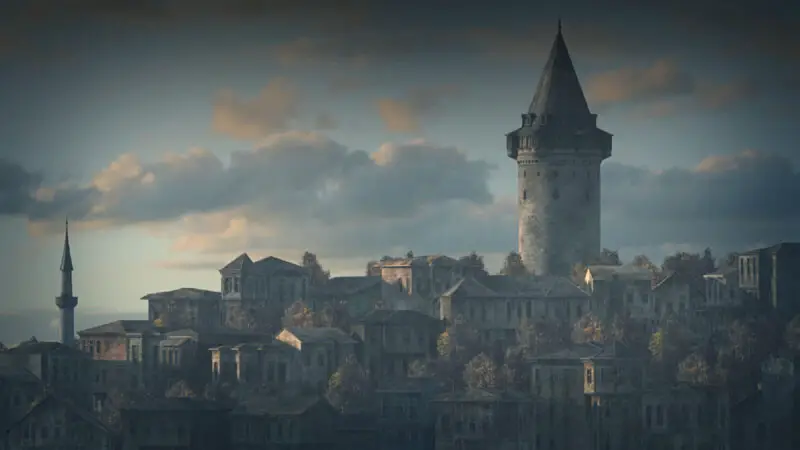
The Galata Tower was built in the 14th century by the Genoese as part of their defence system. The 67-metre-tall tower provides panoramic views of the city and surrounding waterways. Visitors can enjoy a restaurant and café at the top, making the Galata Tower an essential stop for architecture enthusiasts and casual visitors.
Walls of Constantinople
The Walls of Constantinople are a testament to the city’s strategic importance throughout history. The well-preserved Theodosian walls, which were built and expanded over the centuries by emperors, played a crucial role in protecting the city from invasions. Some sections remain standing, and provide a visible link to Istanbul’s glorious past.

Takeaway
The historical places in Istanbul offer an unparalleled glimpse into the city’s rich heritage. From the Hagia Sophia and Blue Mosque to the Topkapi Palace, Basilica Cistern and The Galata Tower, these sites provide visitors with countless opportunities to experience a remarkable city.
Cultural Fusion and Lifestyle
Istanbul is a melting pot of cultures and traditions. With a unique location bridging East and West, the city maintains a rich and diverse cultural heritage that has been shaped over centuries by different empires.
Istanbul’s architectural landscape displays the influence of these diverse beliefs. Numerous mosques, churches, and synagogues stand as a testament to the city’s rich religious heritage. In the 21st century, Istanbul has become a thriving centre for contemporary art, exhibitions, and cultural events. They feature the works of local and internationally renowned artists.
Modern Istanbul
Modern Istanbul seamlessly blends a rich historical heritage with rapid urbanisation and contemporary development. Positioned at the crossroads of Europe and Asia, the city boasts a diverse skyline featuring iconic landmarks like the Hagia Sophia alongside sleek skyscrapers such as the Istanbul Sapphire.
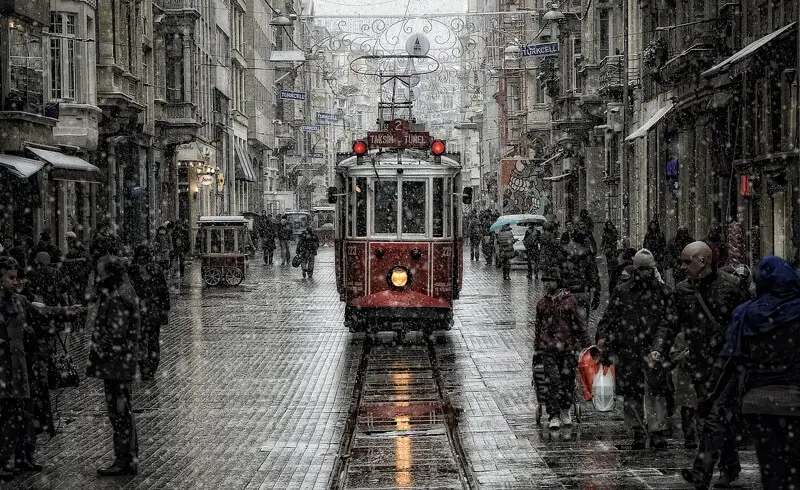
Economically vibrant, Istanbul showcases bustling markets, upscale shopping districts, and a growing tech industry. Trendy neighbourhoods like Beyoglu and Kadikoy attract a mix of artists, entrepreneurs, and the young generation. Efficient transportation: buses, trams, ferries, and the Istanbul Metro, along with the Bosphorus Bridge and Marmaray Tunnel, emphasise the city’s commitment to connectivity.
Istanbul is a cosmopolitan hub hosting international events, art exhibitions, and a vibrant nightlife. Despite its modernity, the city remains deeply rooted in tradition, with Turkish baths, bazaars, and the timeless ritual of tea-drinking reflecting its historical tapestry. The call to prayer resonating from minarets provides a spiritual backdrop, underlining the city’s enduring connection to its heritage.
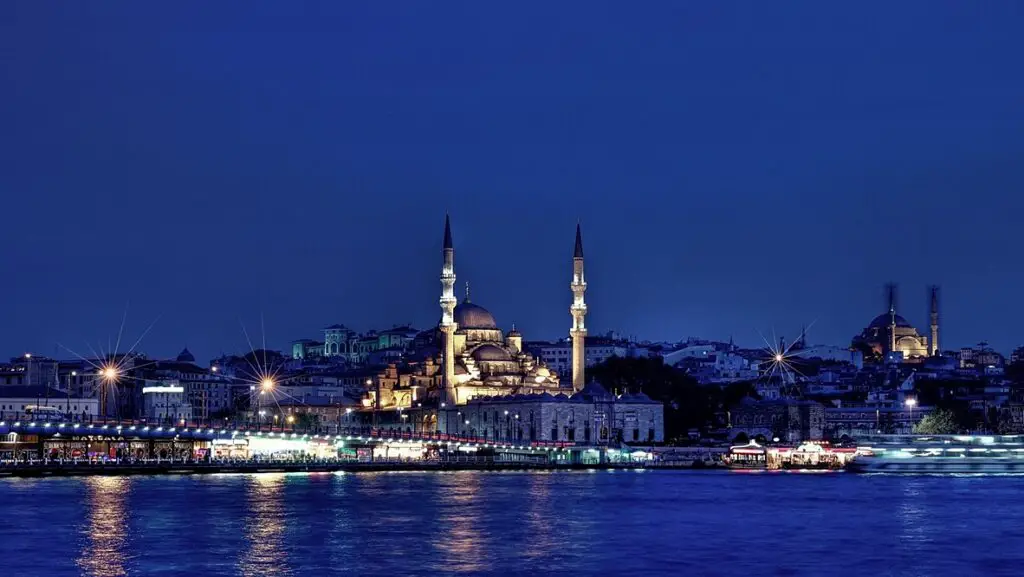
Takeaway
Modern Istanbul is a dynamic metropolis, harmonising the past and present, inviting exploration through diverse experiences and unique blend of cosmopolitanism and historical charm.
Culinary Delights
Istanbul’s culinary scene is a mesmerising tapestry of flavours, drawing on centuries of cultural influences and rich history. The city’s gastronomy is a harmonious blend of traditional Turkish dishes, Ottoman cuisine, and contemporary innovations, creating a culinary journey that is as diverse as Istanbul itself.
At the heart of Istanbul’s food culture are the bustling markets, like the Grand Bazaar and Spice Bazaar, where the air is filled with the enticing aroma of spices, fresh produce, and delectable street food. Turkish kebabs, a culinary icon, are expertly grilled and served with a medley of mezes, showcasing the country’s mastery of spices and herbs.
You cannot explore Istanbul’s culinary delights without savouring the famous Turkish breakfast, a lavish spread featuring olives, cheeses, tomatoes, cucumbers, and various jams accompanied by freshly baked bread. Bosphorus-side seafood restaurants offer a taste of the city’s maritime heritage, serving freshly caught fish and seafood with a panoramic view.
Desserts, like baklava and Turkish delight, showcase Turkey’s sweet tooth, while Turkish coffee, served thick and strong, is an integral part of the social fabric. Modern Istanbul also boasts a thriving cafe culture, with trendy establishments offering a fusion of traditional Turkish coffee and international coffee trends.

Takeaway
Istanbul’s culinary delights are a celebration of diversity, a fusion of ancient recipes and contemporary twists that captivate the taste buds and reflect the city’s vibrant cultural mosaic.
Vibrant Markets
Istanbul’s vibrant markets are lively hubs pulsating with energy, colour, and a kaleidoscope of aromas. Walking through The Grand Bazaar in 1998 was an unforgettable experience. I just wish I had more time to explore the historic labyrinth that dates back to the 15th century, and stands as one of the world’s oldest and largest covered markets.
Its bustling alleys are adorned with dazzling displays of Turkish carpets, intricately designed ceramics, spices, textiles, and an array of traditional crafts. Navigating the Grand Bazaar is an immersive experience, where haggling is an art form, and every corner unveils a treasure trove of cultural artifacts.
The Spice Bazaar, also known as the Egyptian Bazaar, tantalises the senses with its aromatic offerings. Spices, dried fruits, nuts, and an array of Turkish delight fill the stalls, creating a feast for both the eyes and the palate. Istanbul’s markets extend beyond these historic venues, with street markets like Kadikoy’s bustling produce market offering fresh fruits, vegetables, and local delicacies.

Takeaway
These markets aren’t just places to shop; they are social spaces where locals gather, forging a vibrant tapestry of community life. The markets of Istanbul, with their centuries-old traditions and dynamic atmospheres, provide an authentic glimpse into the city’s cultural soul.
Final Thoughts
Istanbul’s culture and lifestyle are deeply rooted in its unique history and geography. The city’s religious architecture, art scene and landmark building contribute to its vibrant and diverse atmosphere. Visitors to Istanbul will undoubtedly find themselves immersed in the captivating blend of cultures and traditions that this remarkable city has to offer.
Why not Join Us
If you enjoyed this article, we would like to offer you two gifts – our Starter Pack of 4 James King’s books and our Weekly Digest, which you can receive by email.

